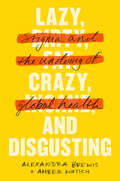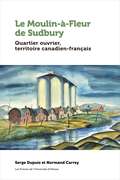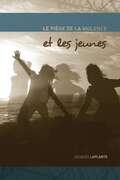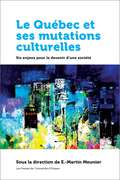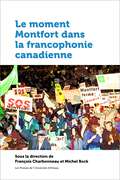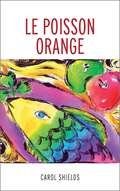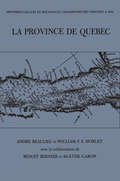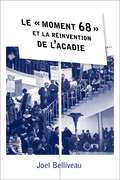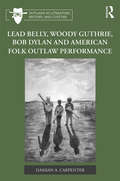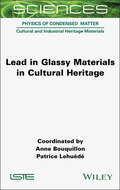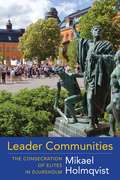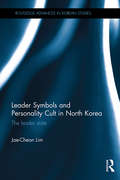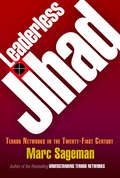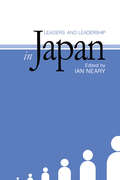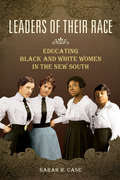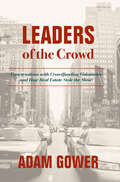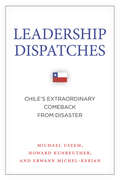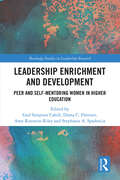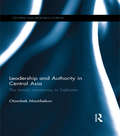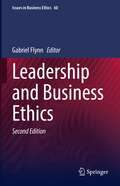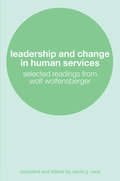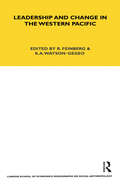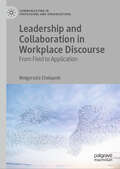- Table View
- List View
Lazy, Crazy, and Disgusting: Stigma and the Undoing of Global Health
by Alexandra Brewis Amber WutichPromotional headline: How stigma derails well-intentioned public health efforts, creating suffering and worsening inequalities.2020 Winner, Society for Anthropological Sciences Carol R. Ember Book PrizeShortlisted for the British Sociological Association's Foundation for the Sociology of Health and Illness Book PrizeStigma is a dehumanizing process, where shaming and blaming are embedded in our beliefs about who does and does not have value within society. In Lazy, Crazy, and Disgusting, medical anthropologists Alexandra Brewis and Amber Wutich explore a darker side of public health: that well-intentioned public health campaigns can create new and damaging stigma, even when they are otherwise successful. Brewis and Wutich present a novel, synthetic argument about how stigmas act as a massive driver of global disease and suffering, killing or sickening billions every year. They focus on three of the most complex, difficult-to-fix global health efforts: bringing sanitation to all, treating mental illness, and preventing obesity. They explain how and why humans so readily stigmatize, how this derails ongoing public health efforts, and why this process invariably hurts people who are already at risk. They also explore how new stigmas enter global health so easily and consider why destigmatization is so very difficult. Finally, the book offers potential solutions that may be able to prevent, challenge, and fix stigma. Stigma elimination, Brewis and Wutich conclude, must be recognized as a necessary and core component of all global health efforts.Drawing on the authors' keen observations and decades of fieldwork, Lazy, Crazy, and Disgusting combines a wide array of ethnographic evidence from around the globe to demonstrate conclusively how stigma undermines global health's basic goals to create both health and justice.
Le Maya Q'atzij/Our Maya Word: Poetics of Resistance in Guatemala (Indigenous Americas)
by Emil’ KemeBringing to the fore the voices of Maya authors and what their poetry tells us about resistance, sovereignty, trauma, and regeneration In 1954, Guatemala suffered a coup d&’etat, resulting in a decades-long civil war. During this period, Indigenous Mayans were subject to displacement, disappearance, and extrajudicial killing. Within the context of the armed conflict and the postwar period in Guatemala, K&’iche&’ Maya scholar Emil&’ Keme identifies three historical phases of Indigenous Maya literary insurgency in which Maya authors use poetry to dignify their distinct cultural, political, gender, sexual, and linguistic identities.Le Maya Q&’atzij / Our Maya Word employs Indigenous and decolonial theoretical frameworks to critically analyze poetic works written by ten contemporary Maya writers from five different Maya nations in Iximulew/Guatemala. Similar to other Maya authors throughout colonial history, these authors and their poetry criticize, in their own creative ways, the continuing colonial assaults to their existence by the nation-state. Throughout, Keme displays the decolonial potentialities and shortcomings proposed by each Maya writer, establishing a new and productive way of understanding Maya living realities and their emancipatory challenges in Iximulew/Guatemala.This innovative work shows how Indigenous Maya poetics carries out various processes of decolonization and, especially, how Maya literature offers diverse and heterogeneous perspectives about what it means to be Maya in the contemporary world.
Le Moulin-à-Fleur de Sudbury: Quartier ouvrier, territoire canadien-français (Amérique française)
by Serge Dupuis M. Normand CarreyÀ son apogée entre 1945 et 1975, le Moulin-à-Fleur ou la paroisse Saint-Jean-de-Brébeuf se vantait d’être le quartier francophone de Sudbury et de l’Ontario. Il représentait en effet la pierre angulaire pour les autres communautés francophones ainsi que le fondement de la vie culturelle, économique et politique des Franco-Ontariens. Mais l’histoire n’a jamais été racontée de façon détaillée.Des années de recherches approfondies ont incité les auteurs à se plonger dans de nombreux écrits, articles scientifiques, archives personnelles, articles de journaux et témoignages afin de livrer cette première étude globale.Divisé en deux volets qui se complètent, ce récit retrace à la fois l’héritage des familles qui se sont battues pour offrir un quotidien et un avenir brillants à leur descendance et la lutte féroce menée par des pionniers, notamment Omer Thériault, Gaétan Gervais et Hélène Gravel, pour la défense culturelle et patrimoniale.Mais tous ces souvenirs dorment dans les rues de l’ancien quartier ou comme Mme Tregonning-Whissell le disait, «à l’ombre des silos». Ce livre témoigne des origines d’une communauté marquée par le dur labeur des mineurs de l’International Nickel, tout en évoquant le rôle des enseignants qui éveillaient les jeunes générations à un monde de possibilités. Le Moulin-à-Fleur de Sudbury rend hommage aux valeurs de charité et d’entraide qu’incarnait ce quartier qui célèbre au-delà de 120 ans de vie communautaire et culturelle.
Le Piège de la violence et les jeunes (Perspectives alternatives en criminologie)
by Jacques LaplanteLa violence a multiples faces, toutes celles qu'on lui donne selon les soucis de l'heure et les jeunes font toujours partie de ces soucis. Le piège de la violence dans lequel le jeune peut tomber ne dépend pas uniquement de son agir, mais relève de la façon dont on appréhende cet agir en termes de violence. Ce piège ne dépend pas non plus uniquement de ce qu'est le jeune; il relève souvent de la manière dont on se saisit de sa personne pour en préciser le profil délinquant. Dans ce processus qui conduit souvent au pénal, le piège se referme sur le jeune et peut le détruire complètement. L'ouvrage examine comment cette violence particulière capable de détruire le jeune s'infiltre socialement. Cette violence n'a pas sa source dans quelque intervention extraordinaire de l'autorité étatique, mais bien dans un quotidien plus ou moins banal où rationalisations, peurs, intérêts, idéologies reconduisent les structures en place. La violence des jeunes prend la figure de l'institution qui la combat. Publié en français
Le Québec et ses mutations culturelles: Six enjeux pour le devenir d’une société (Amérique française)
by E. Martin MeunierCet ouvrage, avec ses contributions tantôt essayistes, tantôt savantes, cherche à approfondir la réflexion sur le Québec contemporain afin de mieux comprendre la nature des mutations qui le transforment profondément aujourd'hui. Après l'introduction essayiste (de E.-Martin Meunier), on y trouve d’abord une section de quatre textes (signés Joseph-Yvon Thériault, Anne Trépanier, Jean-Bissonnette et Pierre Baudet) qui font un retour sur les Carrés rouges et les évènements du printemps 2012. La deuxième thématique rassemble des essais portant sur la question sociale et économique récente, avec des contributions parfois polémiques de Gilles Paquet, Francis Dupuis-Déri et Gilles Labelle. La troisième, consacrée à la question universitaire et à sa rapide transformation, compte un texte de Marc Chevrier et un autre d'Eric Martin et Maxime Ouellet. La quatrième thématique, consacrée à la démographie, propose une analyse, par Guillaume Marois, du caractère distinct de la société québécoise, de même qu’un essai évocateur et comparatif d’Isabelle Matte. La question nationale est explorée par Jean-Claude Racine qui analyse la question de la décanadianisation de la société québécoise, Linda Cardinal qui suggère des pistes analytiques pour saisir les liens entre le mouvement étudiant de 2012 et le nationalisme québécois, et Mathieu Bock-Côté qui propose une lecture récapitulative de ce qu’il voit comme une certaine renaissance du nationalisme, des Carrés rouges à la Charte des valeurs. La thématique religieuse vient clore l’ouvrage avec les contributions de Jean-François Laniel sur la laïcité en lien avec les petites nations, de Solange Lefebvre sur les différents aménagements du religieux et de l’État au Québec et dans le monde occidental, et de François Rocher, qui propose un modèle analytique pour comprendre l’histoire récente du régime de laïcité au Québec. Publié en français
Le moment Montfort dans la francophonie canadienne (Amérique française)
by Anne Gilbert Marcel Martel Marie-Claude Thifault Pierre Foucher François-Olivier Dorais Serge Miville Mariève Forest Madame Louise Bouchard Professeur Michel BockEn février 1997, le gouvernement ontarien annonce la fermeture de l’Hôpital Montfort, le seul hôpital universitaire francophone de la province. L’onde de choc est immédiate et donne naissance sans tarder à SOS Montfort, organisme militant voué à la sauvegarde d’une institution jugée essentielle à la survie de l’Ontario français. En résulte un impressionnant mouvement de solidarité qui braque les projecteurs sur la question des minorités francophones à l’échelle pancanadienne.Sous la direction de François Charbonneau et Michel Bock, Le moment Montfort dans la francophonie canadienne analyse sous plusieurs angles les enjeux et les retombées d’une crise d’envergure nationale. Il en offre une vue d’ensemble approfondie et inédite qui permet de renouveler notre compréhension de la condition sociopolitique des communautés francophones minoritaires au Canada.
Le poisson orange (Traduction littéraire)
by Carol ShieldsUn sourire de reconnaissance attendrie apparaîtra sur les lèvres du lecteur. Pourtant, la surprise l’attend au détour. Entre le poisson rouge magique – énigmatique et sans âge – aux réunions de famille, la passion et la souffrance d’amants et d’amis, et l’incertitude de vacances à Paris, cet exquis recueil de nouvelles plaira et enchantera à coup sûr. Ce recueil avait reçu le prix Marian Engel (1990).Publié en français.
Le province de Quebec
by Agathe Garon W.F.E. Morley André Beaulieu Benôit BernierThere is no doubt that local and regional history, considered by many as a kind of minor historical study, has a pressing need for a systematic inventory of its resources. This collection shows the durability, the vividness, and the astonishing productivity of a sector of history which is the stronghold of the history-lover rather than the professional historian.The nature and content of each book determines its selection. For each book included, the compilers have weighed its contribution to local history and regional history rather than the style in which it is written--narrative, memoir, descriptive study, or novel. It is this criterion of selection that has permitted the retention of several general histories of a varied nature--Bouchette, Charlevoix, Nicholas Denys, La Potherie, Lescarbot, Hanotaux, Sulte, etc.-- where local and regional life takes on a major importance for reasons of order in history, method, or quite simply because local life is the principal object of the study itself. The editors have also retained certain works--those of George W. Brown, Arthur Buies, George M. Grant, Blodwen Davies, etc.--because they are primarily descriptive and contain numerous elements in which local history blends with the manners and customs of the inhabitants of certain regions.This bibliography is designed primarily for historiographers who have until now paid little attention to local, regional, or parochial history. It will also be invaluable for librarians who suffer from the numerous difficulties involved in the classification of such works. Since 1950, all works published in Canada are, by virtue of the book deposit law, provided to the National Library of Canada, and recorded in Canadiana.
Le « moment 68 » et la réinvention de l’Acadie: Le « moment 68 » et la réinvention de l’Acadie (Amérique française)
by Joel BelliveauLa distance et les barrières linguistiques n’ont pu empêcher le mouvement étudiant nord-américain de former une incarnation locale en terre acadienne, culminant dans une participation enthousiasme au « moment 1968 » planétaire, avec une saveur originale toutefois, qui changera profondément la culture politique de cette minorité linguistique.|Quatre notables acadiens reçus tels des chefs d’État par Charles de Gaulle au palais de l’Élysée. Plus de 2000 personnes qui manifestent dans les rues de Moncton scandant « on veut du français ! ». Une confrontation très médiatisée à l’hôtel de ville entre quatre jeunes résolus et un maire francophobe. Une tête de cochon déposée sur le seuil de sa maison en guise de protestation. L’occupation du plus grand pavillon de l’Université de Moncton par des étudiants armés de boyaux d’arrosage. Voilà quelques images fortes du « moment 68 » en Acadie, des images ancrées profondément dans la mémoire collective des Acadiens.Le présent ouvrage relate l’histoire du mouvement étudiant de Moncton, qui a été, toutes proportions gardées, l’un des plus importants au Canada au cours des années 1960. La dimension nationaliste de ce mouvement étant déjà relativement bien connue, cet ouvrage, appuyé sur des sources inexploitées, apporte une contribution importante à nos connaissances du « moment 68 », en l’ancrant dans l’histoire de la nouvelle gauche. Il permet ainsi de mieux comprendre la genèse et la nature de ce mouvement qui a conduit à un changement de paradigme politique en Acadie. Car, comme nous le rappelle l’auteur, les actions et les paroles des étudiants acadiens représentent, aussi, une incarnation locale de ce large mouvement qui marque l’histoire contemporaine et qui secoue le Québec comme le Canada, les États-Unis et l’Europe.|Quatre notables acadiens reçus tels des chefs d’État par Charles de Gaulle au palais de l’Élysée. Plus de 2000 personnes qui manifestent dans les rues de Moncton scandant « on veut du français ! ». Une confrontation très médiatisée à l’hôtel de ville entre quatre jeunes résolus et un maire francophobe. Une tête de cochon déposée sur le seuil de sa maison en guise de protestation. L’occupation du plus grand pavillon de l’Université de Moncton par des étudiants armés de boyaux d’arrosage. Voilà quelques images fortes du « moment 68 » en Acadie, des images ancrées profondément dans la mémoire collective des Acadiens.Le présent ouvrage relate l’histoire du mouvement étudiant de Moncton, qui a été, toutes proportions gardées, l’un des plus importants au Canada au cours des années 1960. La dimension nationaliste de ce mouvement étant déjà relativement bien connue, cet ouvrage, appuyé sur des sources inexploitées, apporte une contribution importante à nos connaissances du « moment 68 », en l’ancrant dans l’histoire de la nouvelle gauche. Il permet ainsi de mieux comprendre la genèse et la nature de ce mouvement qui a conduit à un changement de paradigme politique en Acadie. Car, comme nous le rappelle l’auteur, les actions et les paroles des étudiants acadiens représentent, aussi, une incarnation locale de ce large mouvement qui marque l’histoire contemporaine et qui secoue le Québec comme le Canada, les États-Unis et l’Europe. Publié en français
Lead Belly, Woody Guthrie, Bob Dylan, and American Folk Outlaw Performance (Outlaws in Literature, History, and Culture)
by Damian A. CarpenterWith its appeal predicated upon what civilized society rejects, there has always been something hidden in plain sight when it comes to the outlaw figure as cultural myth. Damian A. Carpenter traverses the unsettled outlaw territory that is simultaneously a part of and apart from settled American society by examining outlaw myth, performance, and perception over time. Since the late nineteenth century, the outlaw voice has been most prominent in folk performance, the result being a cultural persona invested in an outlaw tradition that conflates the historic, folkloric, and social in a cultural act. Focusing on the works and guises of Lead Belly, Woody Guthrie, and Bob Dylan, Carpenter goes beyond the outlaw figure’s heroic associations and expands on its historical (Jesse James, Billy the Kid), folk (John Henry, Stagolee), and social (tramps, hoboes) forms. He argues that all three performers represent a culturally disruptive force, whether it be the bad outlaw that Lead Belly represented to an urban bourgeoisie audience, the good outlaw that Guthrie shaped to reflect the social concerns of marginalized people, or the honest outlaw that Dylan offered audiences who responded to him as a promoter of clear-sighted self-evaluation. As Carpenter shows, the outlaw and the law as located in society are interdependent in terms of definition. His study provides an in-depth look at the outlaw figure’s self-reflexive commentary and critique of both performer and society that reflects the times in which they played their outlaw roles.
Lead in Glassy Materials in Cultural Heritage
by Anne Bouquillon Patrice LehuédéAlthough the development of lead crystal was a major step in the history of glass in the late 17th century, the presence of lead in vitreous matrices (glass and glazes) is much older, dating back to the second millennium BCE. Lead in Glassy Materials in Cultural Heritage traces the history of these skills and also looks at the most recent developments in materials science concerning the role played by lead in the properties of glass, including coloring. It develops an understanding of weathering processes and notions of the durability of leaded glass. It also examines public health issues and current recommended standards for the use of lead in industrial glass. This multidisciplinary book is intended for a wide audience: art and technical historians, museum curators, restorers, materials specialists, manufacturers and engineers.
Leader Communities: The Consecration of Elites in Djursholm
by Mikael HolmqvistAll around the world there are elite suburban communities: Palo Alto, California, and Greenwich, Connecticut, in the U.S.; Paris's Neuilly; and Oxshott outside London. These wealthy suburbs are home to the economic and social elites who work in the world's global cities. Stockholm's suburb Djursholm is one such place. It is full of large houses, winding lanes, and is surrounded by a beautiful landscape. Its residents prize physical fitness, healthy eating, fine art, and education. Despite Sweden's reputation for egalitarianism, Djursholm is representative of global mechanisms of privilege and its perpetuation.Leader Communities is the sociologist Mikael Holmqvist's term for places like Djursholm: the communities where elites choose to live, socialize with other elites, and, most importantly, form families and raise their children into future elites. Such neighborhoods consecrate inhabitants into leaders—that is, they offer their residents a social environment that imbues people with a sense of social and moral elevation. By idealizing their residents, leader communities' allegedly superior lifestyle and character act as a principle of distinction and legitimation. Holmqvist calls this a consecracy—a society that leads by means of its aura, brightness, and radiance, allowing the privileged to pose as a moral vanguard. Leaders are made—not born—by the culture, history, traditions, ceremonies, rituals, and institutions of the place. Based on a comprehensive five-year ethnographic study, this book is a community study of Djursholm in which the author ventures inside the world of the elite to explore the mechanics of social interaction and power. Leader Communities introduces vital new concepts to the study and understanding of contemporary elites and offers a troubling analysis of the moral, social, and political consequences of their aspirations to lead societies.
Leader Symbols and Personality Cult in North Korea: The Leader State (Routledge Advances in Korean Studies)
by Jae-Cheon LimThe legitimacy of the North Korean state is based solely on the leaders’ personal legitimacy, and is maintained by the indoctrination of people with leader symbols and the enactment of leadership cults in daily life. It can thus be dubbed a "leader state". The frequency of leader symbols and the richness and scale of leader-symbol-making in North Korea are simply unrivalled. Furthermore, the personality cults of North Korean leaders are central to people’s daily activity, critically affecting their minds and emotions. Both leader symbols and cult activities are profoundly entrenched in the institutions and daily life, and if separated and cancelled, the North Korean state would be transformed. This book analyses North Korea as a "leader state", focusing on two elements, leader symbols and cult activities. It argues that these elements have been, and continue to be, the backbone of North Korea, shaping North Korean culture. To reveal the "leader state" character, the book specifically examines North Korea’s leadership cults, its use of leader symbols in these cults, and the nature of the symbolism involved. How has the North Korean state developed the cult of the Kim Il Sung family? How does the state use leader symbols to perpetuate this cult? How has the state developed myths and rituals that sustain the cult in daily life? What leader images has state propaganda manufactured? How does the state’s manipulation of leader symbols affect the symbolism that is assigned to the leader’s actions? In answering these questions, this book sheds new light on the strength and resilience of the North Korean state, and shows how it has been able to survive even the most difficult economic period of the mid-1990s. Leader Symbols and Personality Cult in North Korea will be essential reading for students and scholars of North Korea, Korean politics, Asian politics, political sociology and visual politics.
Leaderless Jihad
by Marc SagemanIn the post-September 11 world, Al Qaeda is no longer the central organizing force that aids or authorizes terrorist attacks or recruits terrorists. It is now more a source of inspiration for terrorist acts carried out by independent local groups that have branded themselves with the Al Qaeda name. Building on his previous groundbreaking work on the Al Qaeda network, forensic psychiatrist Marc Sageman has greatly expanded his research to explain how Islamic terrorism emerges and operates in the twenty-first century.In Leaderless Jihad, Sageman rejects the views that place responsibility for terrorism on society or a flawed, predisposed individual. Instead, he argues, the individual, outside influence, and group dynamics come together in a four-step process through which Muslim youth become radicalized. First, traumatic events either experienced personally or learned about indirectly spark moral outrage. Individuals interpret this outrage through a specific ideology, more felt and understood than based on doctrine. Usually in a chat room or other Internet-based venues, adherents share this moral outrage, which resonates with the personal experiences of others. The outrage is acted on by a group, either online or offline.Leaderless Jihad offers a ray of hope. Drawing on historical analogies, Sageman argues that the zeal of jihadism is self-terminating; eventually its followers will turn away from violence as a means of expressing their discontent. The book concludes with Sageman's recommendations for the application of his research to counterterrorism law enforcement efforts.
Leaders Can Help
by Cynthia Swain Tara FunkPeople can be leaders. Some leaders are men. Some leaders are women. Leaders can help.
Leaders and Leadership in Japan
by Ian NearyShows Japan's group-orientated society may have had fewer so-called 'leaders', but has excelled as a society of king-makers. On the other hand, the way leadership is expressed derives from different values and perceptions of hierarchy.
Leaders of Their Race: Educating Black and White Women in the New South (Women, Gender, and Sexuality in American History)
by Sarah H. CaseSecondary level female education played a foundational role in reshaping women's identity in the New South. Sarah H. Case examines the transformative processes involved at two Georgia schools--one in Atlanta for African-American girls and young women, the other in Athens and attended by young white women with elite backgrounds. Focusing on the period between 1880 and 1925, Case's analysis shows how race, gender, sexuality, and region worked within these institutions to shape education. Her comparative approach shines a particular light on how female education embodied the complex ways racial and gender identity functioned at the time. As she shows, the schools cultivated modesty and self-restraint to protect the students. Indeed, concerns about female sexuality and respectability united the schools despite their different student populations. Case also follows the lives of the women as adult teachers, alumnae, and activists who drew on their education to negotiate the New South's economic and social upheavals.
Leaders of the Crowd: Conversations With Crowd Funding Visionaries And How Real Estate Stole The Show
by Adam GowerCrowdfunding is nothing new. In fact, America was built and financed by crowdfunding. But in 1933 Congress passed the Securities Act, which shut the door on this most democratic means of raising capital and spreading wealth. In 2012, enjoying broad bipartisan support, congress threw the doors open again, passing the JOBS Act (Jumpstart Our Business Startups). Its intent was to stimulate growth of small businesses and startups, but an unexpected consequence of the Act was that the biggest beneficiary has been the real estate industry. <p><p> Researching the origins of the JOBS Act, Dr. Adam Gower conducted a series of conversations with the people who lobbied for and wrote the laws that became the Act. What he discovered was that at no time had anyone thought that the real estate industry was a relevant constituency. Perplexed by this disconnect between what had been intended and what had happened, he talked to those who had been the very first real estate people to utilize the JOBS Act. These pioneers, all moving on parallel tracks, seeded the biggest, most transformational change to the real estate industry in history. <p> This book uncovers these conversations with the people who created the laws and those who connected the dots to real estate. It weaves a thread through the labyrinthine processes of government, chronicling how the Act was conceived, formed, and ultimately signed into law, and it reveals how the visionaries who have revolutionized real estate capital formation embarked on their missions to change their industry forever. <p> Learn how the JOBS Act, never expected to benefit real estate, has transformed the industry, changing the way capital is raised and syndications are formed forever and how an unintended consequence is helping almost everyone in America invest in real estate like never before.
Leadership Dispatches: Chile's Extraordinary Comeback from Disaster
by Michael Useem Howard Kunreuther Erwann Michel-KerjanOn February 27, 2010, Chile was rocked by a violent earthquake five hundred times more powerful than the one that hit Haiti just six weeks prior. The Chilean earthquake devastated schools, hospitals, roads, and homes, paralyzing the country for weeks and causing economic damage that was equal to 18 percent of Chile's GDP. This calamity hit just as an incumbent political regime was packing its bags and a new administration was preparing to take office. For most countries, it would have taken years, if not decades, to recover from such an event. Yet, only one year later, Chile's economy had reached a six percent annual growth rate. In Leadership Dispatches, Michael Useem, Howard Kunreuther, and Erwann Michel-Kerjan look at how the nation's leaders-in government, business, religion, academia, and beyond-facilitated Chile's recovery. They attribute Chile's remarkable comeback to a two-part formula consisting of strong national leadership on the one hand, and deeply rooted institutional practices on the other. Coupled with strategic, deliberative thinking, these levers enabled Chile to bounce back quickly and exceed its prior national performance. The authors make the case that the Chilean story contains lessons for a broad range of organizations and governments the world over. Large-scale catastrophes of many kinds-from technological meltdowns to disease pandemics-have been on the rise in recent years. Now is the time to seek ideas and guidance from other leaders who have triumphed in the wake of a disaster. In this vein, Leadership Dispatches is both a remarkable story of resilience and an instructive look at how those with the greatest responsibility for a country, company, or community should lead.
Leadership Enrichment and Development: Peer and Self-Mentoring Women in Higher Education (Routledge Studies in Leadership Research)
by Stephanie A. Spadorcia Gail Simpson Cahill Diana C. Direiter Amy Rutstein-RileyThis book shares the LEAD (Leadership Enrichment and Development) method, a framework for supporting and facilitating leadership identity development for women in higher education. Guided by feminist group processes and relational learning, the chapters in this volume illustrate the impacts of self- and peer mentorship on the authors. Part lived experience, part reflection on scholarship on women’s leadership development, this book has implications for those in leadership development settings across professional sectors and career trajectories, offering strategies, implications, and insights for those developing or seeking to learn about peer mentoring programming for women faculty. Women faculty, leadership development coaches, faculty development leaders, directors of centers for teaching excellence, program leaders focused on girls’ and women’s leader development, and students and scholars interested in women’s leadership development in higher education will find this volume of interest. While LEAD’s context is higher education, the volume offers valuable application to other professional settings where women work, lead, and thrive.
Leadership and Authority in Central Asia: The Ismaili Community in Tajikistan (Central Asia Research Forum)
by Otambek MastibekovThis book explores the unfolding of world history in a remote corner of Central Asia: the region of Badakhshan. The history of this region has commonly been explored through the lens of the major superpowers who competed over its territory in the nineteenth and twentieth centuries, including Britain, Russia, and China. Here, we are offered a comprehensive overview of the history of the Ismaili community in Tajikistan. Leadership and Authority in Central Asia identifies traditional forms of religious authority within the network of religious functionaries at a range of levels and discusses the functions of Ismaili political leaders as they have evolved through time. Skilfully applying an interdisciplinary approach – drawing on historical sources, including unpublished materials, and ethnographic fieldwork data collected through interviews – and a perceptive analysis of political theories of leadership in communist and post-communist societies, this book challenges the ways religious and secular categories have been distinguished in recent scholarship Developing a structural explanation for the survival and evolution of religious and political authorities of Badakhshani Ismailis in times of radical social and political upheaval, this book will be of interest to scholars of Muslim societies, Political Science and Central Asian Studies.
Leadership and Business Ethics (Issues in Business Ethics #60)
by Gabriel FlynnThis book offers new and challenging approaches to business ethics that successfully link theory and practice thereby overcoming lacunae and inadequacies in much of the literature concerning ethics and governance, a theme that recurs with remarkable frequency in the history of business ethics as an academic discipline. This work provides imaginative and innovate proposals for the indispensable coupling of virtue, integrity, and character with global business, finance, and banking. The volume seeks to overcome the marginal status of business ethics in universities, business, and enterprise by demonstrating that virtue ethics is an important step in the direction of an adequate response to the leadership issue. This new edition of a popular work points to new ways of achieving an ever more urgent coalescence of ethics and business. It proposes practical advice and viable suggestions to business people on what is right and wrong in business. The volume makes a vital contribution in the area of education that should serve the ongoing development of top leaders. In the important domain of women in leadership, the volume provides new solutions that break boundaries on the global stage. The work challenges unethical marketing of human images with important implications for citizenship and society. The volume contains creative suggestions for the use of spirituality and human development for the enhancement of business and society. The significantly extended second edition includes an exciting line up of leading academics and practitioners in the audacious hope that something may change for the better in the realms of business and banking.
Leadership and Change in Human Services: Selected Readings from Wolf Wolfensberger
by David G. RaceFor over forty years Wolf Wolfensberger has been a significant figure in the world of human services, especially in the field of learning disability. His work on normalization and citizen advocacy in the late 1960s and early 1970s has been acknowledged by supporters and critics alike to have been fundamental to developments in a number of countries, most notably his adopted country, and the USA, Canada, Australasia, and the UK. His further work in developing the theory of social role valorization, the successor to normalisation, and as a commentator on broader trends in society and their effects on vulnerable people and services for them has ensured his place as a major voice for values and the human worth of all people. Never afraid of controversy, his views have brought him into conflict with institutional vested interests and radical groups alike.In Leadership and Change in Human Services David Race introduces the reader to Wolfensberger's key ideas through a series of extracts, with commentary, from his published work. Throughout the edited selection, the emphasis is on placing Wolfensburger's work in contemporary context and examining its continuing relevance today. Including a comprehensive bibliography of Wolfensburger's written output, this text offers an invaluable source of reference to all those concerned with the recent history of the human services.
Leadership and Change in the Western Pacific: Essays Presented To Sir Raymond Firth On The Occasion Of His Ninetieth Birthday (London School Of Economics Monographs On Social Anthropology Ser. #Vol. 66)
by Richard FeinbergAn ethnographic exploration of the rise of new forms of leadership at community and national levels with islanders are synthesising traditional and Western models.
Leadership and Collaboration in Workplace Discourse: From Field to Application (Communicating in Professions and Organizations)
by Małgorzata ChałupnikThis book presents a comprehensive examination of how leadership and collaboration are discursively performed in professional communication, using real-world data from a UK public sector IT team. Taking an auto-ethnographic approach to workplace talk, the author examines the language involved in the performance of different team-based professional roles, examining how professional identity and relationships are indexed through casual face-to-face talk in an office environment. This investigation of how a group of people come together in an effort to achieve shared workplace goals relates to key debates in the area of professional communication, putting forward new theoretical and methodological frameworks for understanding and analysing how person-orientated aspects of professional communication shape discourses of work. This book appeals to a wide and interdisciplinary audience, including advanced undergraduate and postgraduate students, academics and researchers specialising in applied linguistics broadly, and professional communication in particular, as well as consultants and practitioners working across a wide range of professional sectors.
